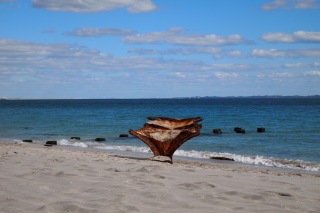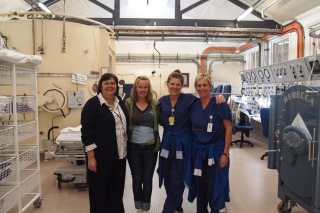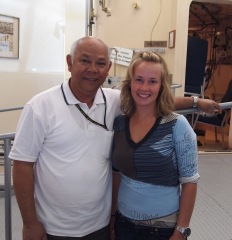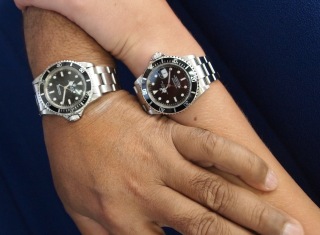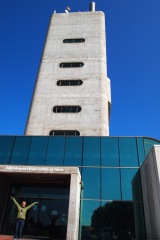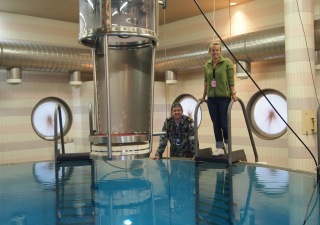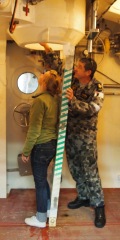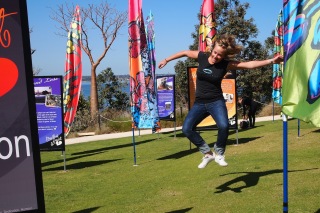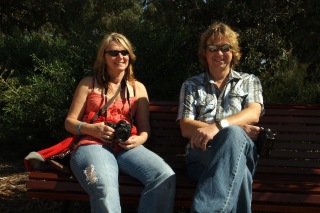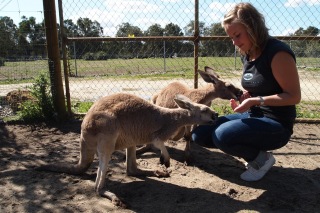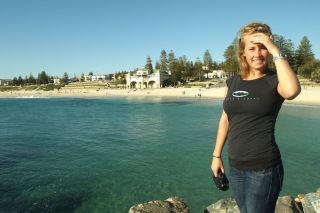This time I am writing from Fremantle, just outside of Perth on the western coast of Australia. Waiting for me at the airport was Shannon Conway. He is a renowned UW photographer (http://www.underwaterphotography.com.au), and together with his wife Amanda, they were my hosts for the week.
The same way Danny Van Belle saved my video, Shannon saved my pictures. He generously gave me a one-on-one photography course, which gave me an exclusive chance to shower him with questions that you generally don´t get a chance to ask when you are being tutored in a group.
Shannon also fixed me up with the Hyperbaric Unit at Fremantle Hospital. When I get the chance, I like to visit the hyperbaric facilities where my travels take me. It is very fascinating to see how the different setups are, and how everybody has their own way of doing things.
Sue Thurston and Helen Mullins took their time to show me around, and let me experience a little bit of their everyday work, which might someday be my everyday work. The facility is the Western Australian State Referral Service, which basically means that it covers an area of 2,6 mill km2. They treat approximately 130 patients a year, and among 25% of those are incidents of decompression illness (= both decompression sickness and arterial gas embolism), the rest non-diving related.
One thing I didn´t expect coming there, was to meet a former employée with COMEX, Tom Nalpon. COMEX is a French company specializing in undersea engineering and deep diving operations, often called ”the NASA of the deep sea”, and Rolex collaborated with Comex to among other things test their watches, and to produce the helium escape valve, which is actually on Tom´s watch. These watches are also special in the way that they were never sold by stores, but issued to the specific divers or officials.
The next day I got the opportunity to step into a world which is mysterious, but still feels familiar to me. Namely the military. Since my dad is in the Norwegian Royal Air Force, I grew up with my share of military bases, and has experienced different aspects of life in the military – but this time I got a closer look on the naval part of the Australian military.
Mark Carey, the Submarine Escape and Rescue Manager, let me and my chaperone, Shannon, in the base for the grand tour. They have a huge capacity for hyperbaric emergencies, as the base is the largest fleet base in the whole of Australia. And, since it is a naval establishment they have submarines! We got a close look on a Collins class submarine, and when Mark told us about its tactical capabilities it was mindblowing. I heard about stuff that you only see in science fiction movies today. All the strategic gadgets it has would make an engineer weep of excitement. Our next stop was the Submariners training facility and hyperbaric unit.
Mark explained to us that they have 2 operating recompression chambers ready at all times because of the training going on, but also huge 36-men complexes they can mobilize if the need is there. The facility is specifically used to train the submariners to escape from a submarine if the conditions prove it necessary, and this form of training has a certain risk. The submariners need to get in their escape suits and escape from a hatch at the bottom of the pool, which is identical to the one in a submarine, and then ascend to the surface of the 7-story pool. If you are not properly trained, or you panic and hold your breath – you WILL risk your life ascending to the surface. And that is one of the reasons they always keep their chambers ready. It was a very special feeling standing under the hatch, knowing that over my head I had a 7-story pool with water, and the pressure alone kept the hatch closed.
Being in Fremantle and staying with Shannon and Amanda proved to give me a rare opportunity – for one day I was 100% a tourist! They took me to Kings Park – which is an enormous recreational area on the west part of Perth. It is truly beautiful, well taken care of and full of stuff to do. There is a botanic garden, aboriginal art everywhere and a huge hiking area to mention some.
We brought our cameras and went picture hunting. The trees are very entertaining in Australia. They can be everything from twisted with bark that sheds off, or their bark can be exactly like elephant skin. They even have baobab trees (those of you who have read ”The Little Prince”, by Antoine de Saint-Exupéry will certainly remember them).
After filling our memory cards with flowers and trees we headed out to Caversham Wildlife Park. Even though I generally cherish moments with animals out in the open more than in captivity – I had to realize that the only chance I had to pat a kangaroo, was in Caversham. They are funny creatures, the kangaroos. Very human-like in their movements and how they lay on the sand. I couldn´t help it, being a medical student and all, so after patting and feeding them for a while I couldn´t hold much longer and tried feeling for their heartbeat by putting my hand on their chest. I can confirm that it is on the left side.
To finish my day of being a tourist, they took me to Cottesloe beach, which is just magnificent. It is so beautiful, and it just goes on and on and on.
At the end of my stay I wanted to show them a little bit of Norwegian culture – so I cooked a full Norwegian meal for them. A traditional Norwegian festive meal called ”rømmegrøt”, a porridge based on sour cream and served with dried lamb sausage. For dessert we had strawberries with milk and sugar – Norway is very proud of their strawberries. It is nice to show people a little bit of Norwegian culture, when they so graciously embrace me in theirs.
